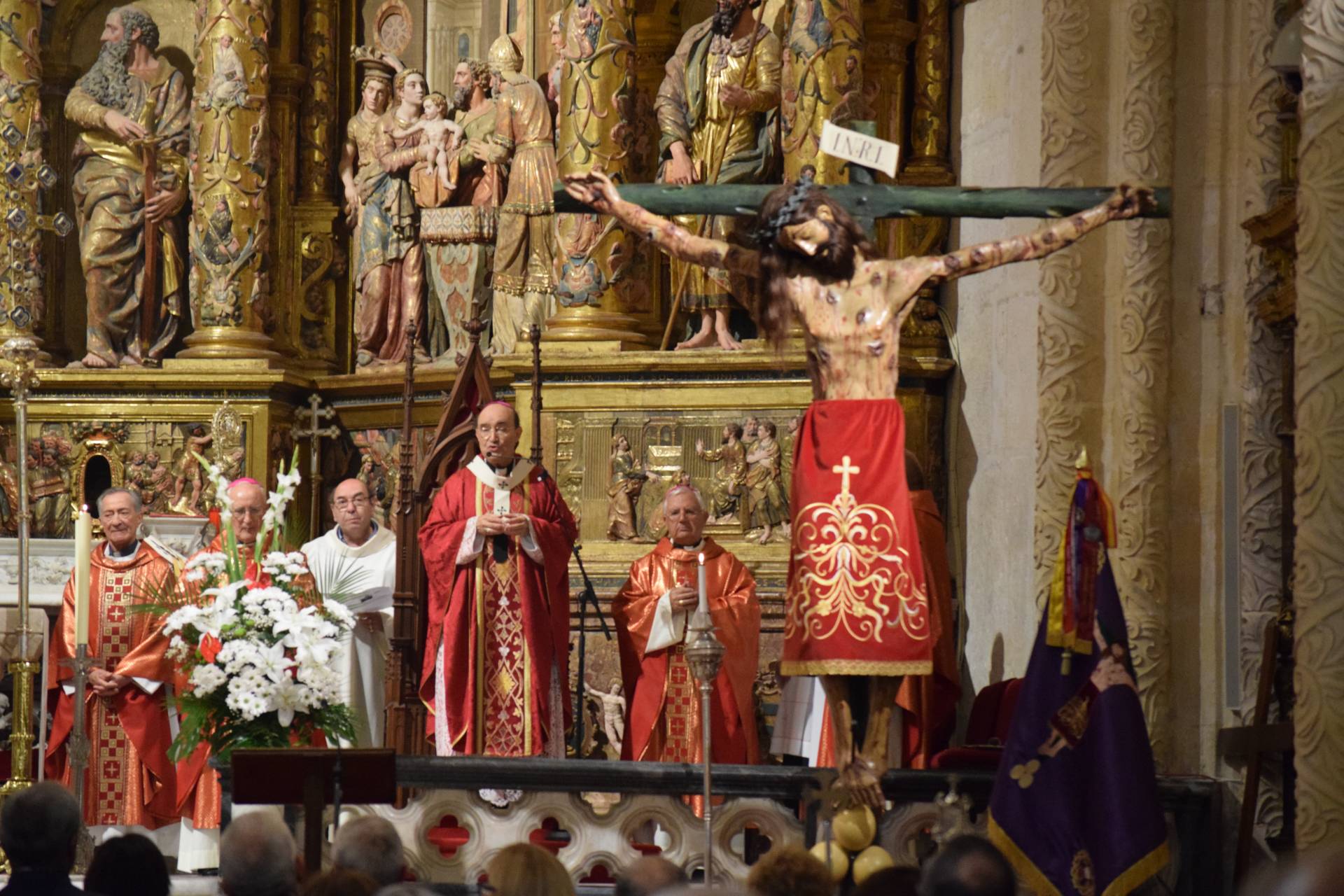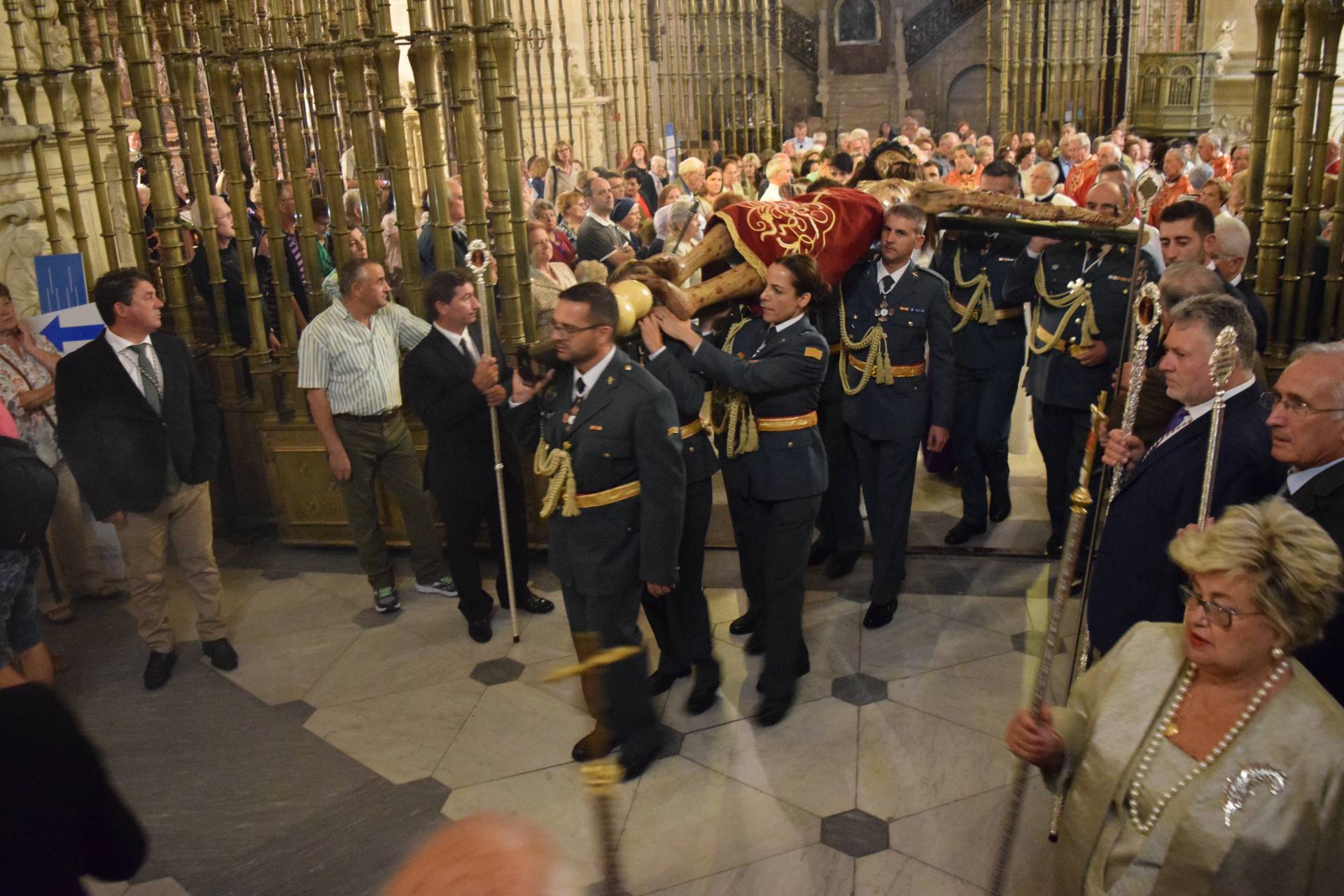Traditionally, during the Good Friday events were used articulated figures. In many places the image of Christ was taken down from the cross on that day and taken in procession through the streets to be venerated by the people. This is the case of the Christ of BurgosThe image has a liturgical function, and was probably also used during the late Middle Ages in the autos sacramentales, dramatized scenes representing the Passion of the Lord.
Five years ago the city of Burgos recovered the tradition of "The Descent from the Cross". thanks to the creation of a replica of the image of the articulated Christ of the Cathedral, which dates from the XIVth century and is of flamenco style and has the particularity of having mobility in the head, arms and feet.

The replica of the Articulated Christ in the Cathedral. Source: www.archiburgos.es
The original piece stopped going out to the streets to avoid deteriorationbecause of its artistic and patrimonial value. Today it is a replica, also made of wood but filled with synthetic fibers, which is paraded through the streets of Burgos.

Unlocking of the replica of the articulated Christ. Source: burgosconecta.es

Unlocking of the replica of the articulated Christ. Source: burgosconecta.es
The new image was created in our workshops under the direction of Francisca Soto. The image is a faithful copy of the original, elaborated by a team of restorers after carrying out an exhaustive study of its materials, radiographies and clinical analysis of the polychromy. For its execution these new scanning and analysis technologies were alternated with traditional techniques such as carving and The head, torso, legs and arms were made of wood. Afterwards, the joints were assembled in metal, filled with fibers and covered with leather.
The details of the image were later completed with additions from The polychromy was carried out with a mixed technique of tempera and oil painting.The original Christ is covered with calfskin, probably to give it greater realism, and the original Christ is covered with calfskin. The original Christ is covered with calfskin, probably to give it greater realism, and with natural hair and nailsThese were also added to the new image to maintain the greatest similarity to the original.

Blessing of the replica of the Articulated Christ. Source: www.archiburgos.es

Departure from the Cathedral of the replica of the Articulated Christ. Source: www.archiburgos.es
